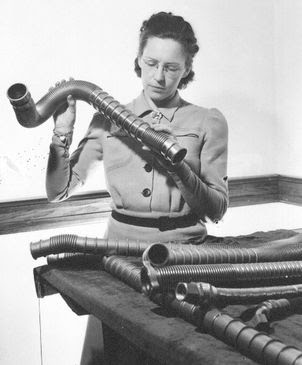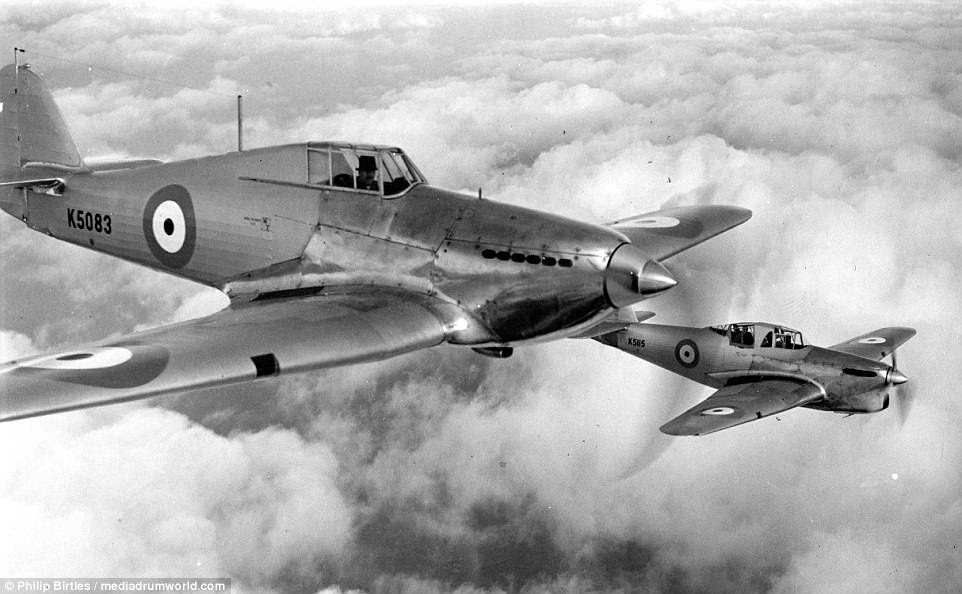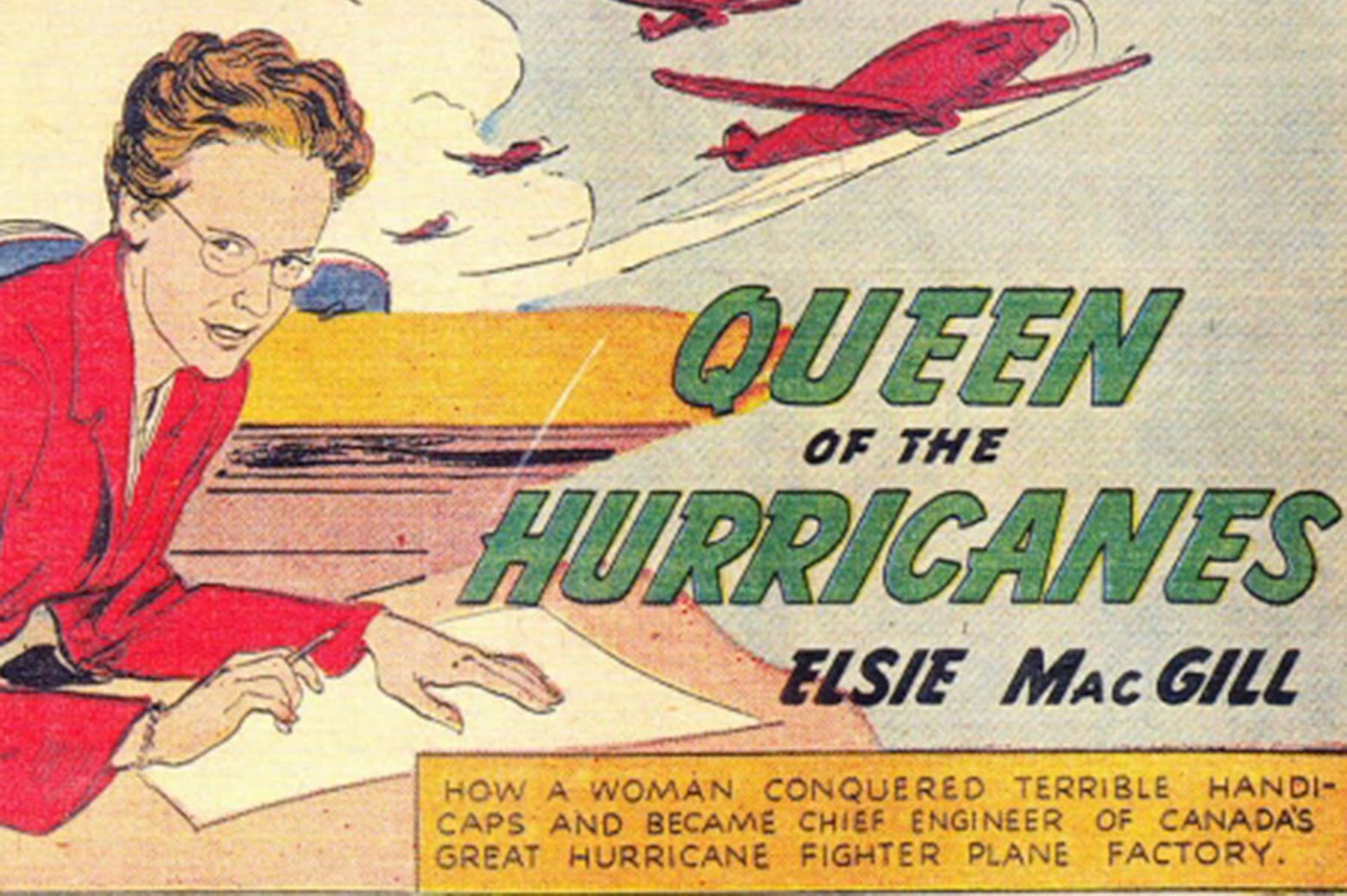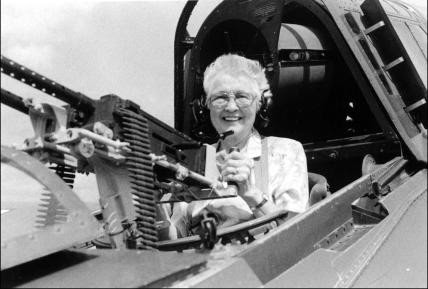2020 Women in Aerospace Conference
The Elsie MacGill Women in Aerospace Conference was held November 14th, 2020 online! Conference activities include keynote speakers, panels, workshops, and the Aerospace Career Fair throughout the day. There is also a Speed Mentoring session. The conference is FREE to everyone. We strive to make this conference inclusive and accessable to anyone that would like to attend. This is our second annual conference, following the 2019 Dawn Seymour Women in Aerospace Conference. Thank you so much to our donors and the University of Michigan for your help in making this event possible!
Early Life
Elizabeth “Elsie” MacGill was born in Vancouver in 1905, as the youngest of James Henry MacGill, a prominent lawyer and part-time journalist and Helen Gregory MacGill, British Columbia's first female judge. Elsie had two older step brothers and an older sister, Dr. Helen MacGill Hughes. With Elsie’s parents’ background, becoming the first women to achieve something was a family value. The MacGills wanted their daughters to have every advantage, so they converted part of their home into a classroom. Elsie and her sister learned to read, write, and study French. They were taught various sports, and took drawing and painting lessons. By Elsie’s late teens she had developed a strong interest in science and was described as having a “knack for fixing things.”
Elizabeth (Elsie) MacGill during her Canadian Car and Foundry (CanCar) years
Education
Elsie’s mother was a strong supporter of women’s suffrage and helped to influence Elsie’s decision to study engineering. In 1923, Elsie was admitted to the University of Toronto’s Bachelor of Applied Sciences program. During the summers she worked in machine shops, repairing electrical motors and giving her her first taste of aeronautical engineering. Right before graduation, she contracted polio and was told she would likely spend the rest of her life in a wheelchair. However, Elsie refused that possibility and taught herself to walk with two strong metal canes. In 1927, Elsie became the first Canadian woman to graduate with an electrical engineering degree.
“My Presence in the University of Toronto’s engineering classes in 1923 certainly turned a few heads.” -Elsie MacGill
Following graduation, Elsie moved to Michigan where she worked for the Austin Automobile Company. When Austin began to manufacture planes, Elsie grew further interested in aeronautics. So, she enlisted in the Master of Science in Engineering program at the University of Michigan. When she graduated in 1929, she became the first woman in North America, and likely the world, with a masters degree in Aeronautical Engineering.
Elsie MacGill was the first practicing woman engineer in Canada and the first female aircraft designer in the world!
Rising Reputation
In 1932, Elsie began doctoral work at MIT and wrote magazine articles about aircraft and flying to help fund her continued studies. However, before too long, Elsie moved back to Canada to work for Fairchild Aircraft in Longuel, Quebec. She specialized in stress analysis and developed a reputation for bravery with her insistence on going up on all of the test flights for every plane she designed.
“Although I never learned to fly myself, I accompanied the pilots on all test flights-even the dangerous first flight- of any aircraft I worked on.” - Elsie MacGill, 1940
In 1938, Elsie was the first woman elected to corporate membership for the Engineering Institute of Canada (EIC). That same year, she presented a technical paper to the Royal Aeronautical Society that received high praise and was later published in “The Engineering Journal.” She also took part in “The Engineer in Wartime” radio broadcast with a segment entitled “Aircraft Engineering in Wartime Canada.” In 1942 Elsie was elected chairman of the EIC Lakehead Branch, after serving as their vice president.
The Queen of Hurricanes
In 1938, Elsie was also hired as chief aeronautical engineer at CanCar, where she supervised their transition from railcar to aircraft manufacturing. Elsie was responsible for a major redesign of the Maple Leaf II training plane and it became recognized as the first plane designed by a woman. After war was declared, CanCar turned to building the Hawker Hurricane fighters.
The Hawker Hurricane Fighter Aircraft that CanCar produced for the Royal Air Force
Under Elsie’s leadership, it took only one year for CanCar to produce the first Hurricane. She pioneered a modular construction system so that each part would be precisely machined and would be identical on each plane.
“They were designed so the parts would fit together like a child’s meccano set. Parts from one airframe are interchangeable with those of another. You can see how useful this would be when they are repairing an airplane damaged in action” - Elsie MacGill
The Hurricanes made it to the UK in time for the Battle of Britain. At CanCar’s peak, Elsie supervised a staff of 4500 workers, with half of them being women. By the end of the war, the factory produced over 2000 thousand Hurricanes. Elsie became a war hero and her work on the Hurricane inspired a comic book of the story entitled “Queen of the Hurricanes” in 1942.
Elsie MacGill portrayed as the "Queen of Hurricanes" in a True Comics series
Later Life and Female Rights Advocacy
After Hurricane production ended in 1943, Elsie married CanCar’s plant manager E.J. (Bill) Soulsby, and the two left CanCar to move to Toronto. Elsie set up her own engineering consulting firm where she mainly worked on civilian aircraft projects. Later, she became the Canadian representative to the United Nations International Civil Aviation Organization.
Elsie’s mother, Helen, died in 1947 which inspired Elsie to write a biography about her life entitled, “My Mother the Judge: A Biography of Helen Gregory MacGill.” The book was the beginning of Elsie becoming more outspoken of her feminist beliefs. In the 1960s, Elsie continued her mother and grandmother’s active public service and worked in the suffrage movement.
Elsie served as the president of the Canadian Federation of Business and Professional Women’s Clubs from 1962 to 1964. She was named to the Royal Commission on the Status of Women in Canada and was a member of the Ontario Status of Women Committee, an affiliate of the National Action Committee on the Status of Women. For her work there, she was given the Order of Canada in 1971.
“I have received many engineering awards, but I hope I will also be remembered as an advocate for the rights of women and children” - Elsie MacGill
Elsie MacGill in her later years
Elsie MacGill died in 1980 after a long and impactful life. She remains a symbol to Canada and women everywhere because of the values she represents: fearlessness, overcoming adversity, inclusion, and how to use our influence to pave the way for others.
Awards and Accomplishments
- MacGill's paper, Factors Affecting the Mass Production of Aeroplanes, won the Gzowski Medal from the Engineering Institute of Canada (1941).
- Gzowski Medal, Engineering Institute of Canada (1941)
- One of only 50 people, and the only woman, to have her picture in the exclusive Gevaert Gallery of Canadian Executives to honor her contributions and influence (1953)
- Award for Meritorious Contribution to Engineering, Society of Women Engineers (1953)
- Awarded the Centennial Medal by the Canadian government (1967), and awarded the Order of Canada for "services as an aeronautical engineering consultant and as a member of the Royal Commission on the Status of Women." (1971)
- Fellow, Engineering Institute of Canada (1972)
- Julian Smith Medal, Engineering Institute of Canada (1973)
- Honorary Doctorate, University of Toronto (1973)
- The Ninety-Nines awarded her the Amelia Earhart Medal in 1975
- Honorary Doctorate, University of Windsor (1976)
- Queen Elizabeth II Silver Jubilee Medal (1977)
- Honorary Doctorates, Queen’s University and York University (1978)
- the Ontario Association of Professional Engineers presented her with their gold medal (1979)
- Inducted into the University of Toronto’s Engineering Hall of Distinction (1980)
- Inducted into Canada's Aviation Hall of Fame (1983)
- Creation of the Elsie Gregory MacGill Memorial Foundation (1984)
- Toronto Historical Plaque at the University of Toronto (1987)
- Founding inductee in the Canadian Science and Engineering Hall of Fame in Ottawa (1992)
- Canadian Engineering Memorial Foundation renames Women Friendly Schools/Faculties Award the Elsie MacGill Award (2000)
- Creation of the Elsie Gregory MacGill Northern Lights Award (2009)
- Inducted into the Women in Aviation International’s Pioneer Hall of Fame (2012)
- Parks Canada plaque placed at the Bombardier plant in Thunder Bay, Ontario (formerly Canadian Car & Foundry) (2012)
- Proposed as one of five finalists to be on Canadian banknotes, a competition closed to men (2016)
- Lakehead District School Board approved Ecole Elsie MacGill Public School as the name of the still-under construction elementary school that will replace Agnew H. Johnston and Edgewater Park public schools when it opens in September 2020 (2019)




